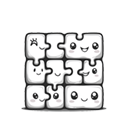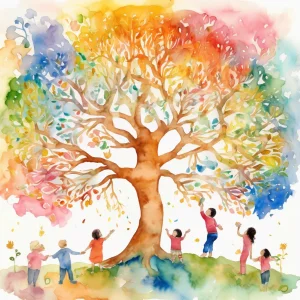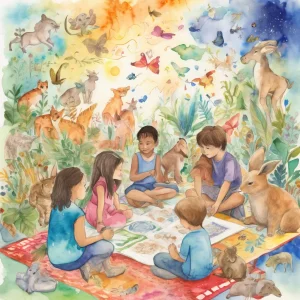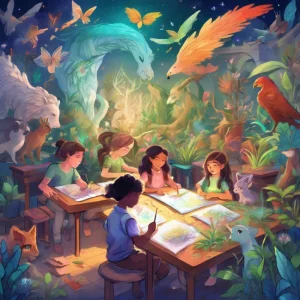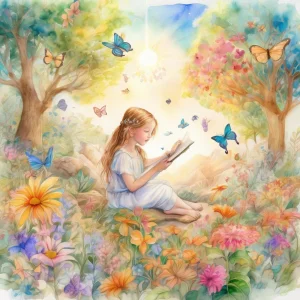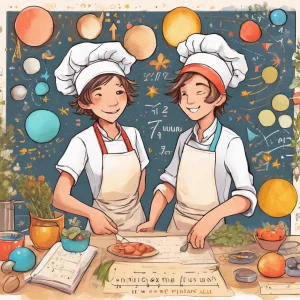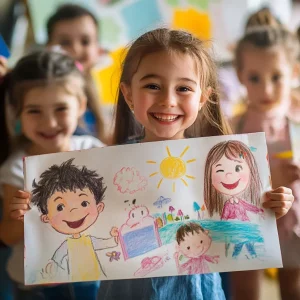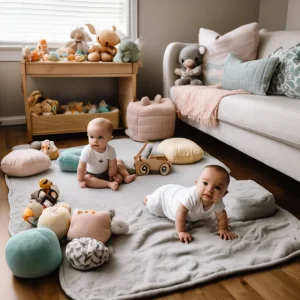Activity
Similar Activities
Family Roots: The Family Tree Finger Painting
Children’s Age: 3–4 years
Activity Duration: 10 – 15 minutes
The Family Tree Finger Painting activity is tailored for children aged 36 to 48 months, nurturing self-regulation and language skills while exploring family bonds and social connec…
Activity Duration: 10 – 15 minutes
Whispers of Nature Rhythms: Exploring Beats and Patterns
Children’s Age: 3–7 years
Activity Duration: 10 – 30 minutes
Let's explore "Nature Rhythms" together! We will listen to nature's beats and patterns using rocks, sticks, leaves, and pinecones. Find a safe outdoor spot, gather natural material…
Activity Duration: 10 – 30 minutes
World Wonders: Around the World Adventure
Children’s Age: 10–12 years
Activity Duration: 30 – 40 minutes
Embark on the "Around the World Adventure" activity, a journey introducing children to various countries, cultures, and wildlife. This engaging experience enhances language, math, …
Activity Duration: 30 – 40 minutes
Whispers of the Cultural Garden Storytelling Forest
Children’s Age: 10–12 years
Activity Duration: 40 – 45 minutes
Engage children in the "Cultural Garden Storytelling" activity for a creative experience supporting empathy and language skills. Set up a cozy area with cushions, books, plants, an…
Activity Duration: 40 – 45 minutes
Nature-Inspired Drawing Activity
Children’s Age: 8–9 years
Activity Duration: 10 – 25 minutes
An outdoor activity where children draw natural elements to foster creativity and ecological awareness.
Activity Duration: 10 – 25 minutes
Ecosystem Adventure Board Game - Nature's Quest
Children’s Age: 7–9 years
Activity Duration: 10 – 25 minutes
An interactive board game where children explore and learn about ecosystems through challenges and tasks.
Activity Duration: 10 – 25 minutes
Whispers of the Future: Persuasive Writing Adventure
Children’s Age: 8–11 years
Activity Duration: 10 – 30 minutes
Engaging activity for 8-11-year-olds focusing on persuasive writing, career exploration, and technology experiments.
Activity Duration: 10 – 30 minutes
Cosmic Conundrum Chefs: Space Word Problem Adventure
Children’s Age: 7–8 years
Activity Duration: 10 – 20 minutes
Let's play Space Word Problem Chefs! We'll use paper, pencils, and space-themed stickers to explore language and problem-solving. Set up a cozy spot, grab your supplies, and get re…
Activity Duration: 10 – 20 minutes
Space Odyssey Coding Adventure Game
Children’s Age: 6–18 years
Activity Duration: 0.5 – 1 hours
Let's go on a Space Adventure Coding Game! We'll use a cardboard spaceship, planets, stars, and coding cards with commands. Create a space atmosphere, place the coding cards, and e…
Activity Duration: 0.5 – 1 hours
Magical Storytelling: Create Together with Friends
Children’s Age: 4–6 years
Activity Duration: 15 – 30 minutes
In the Create a Story Together activity, children will explore their creativity, language skills, and teamwork. Get small pieces of paper, colored pencils, and a container ready. K…
Activity Duration: 15 – 30 minutes
Holiday Textures Sensory Exploration for Infants
Children’s Age: 0 – 3 months
Activity Duration: 5 minutes
Engage infants aged 0 to 3 months in sensory play with this holiday textures exploration activity. Use soft fabrics, textured toys, and optional holiday-scented items in a quiet, s…
Activity Duration: 5 minutes
Whimsical Collage Creations: A Colorful Adventure
Children’s Age: 2–2.5 years
Activity Duration: 5 – 10 minutes
"Colorful Collage Creations" is a creative activity designed for children aged 24 to 30 months to enhance cognitive skills, communication abilities, and creativity. With colored pa…
Activity Duration: 5 – 10 minutes


